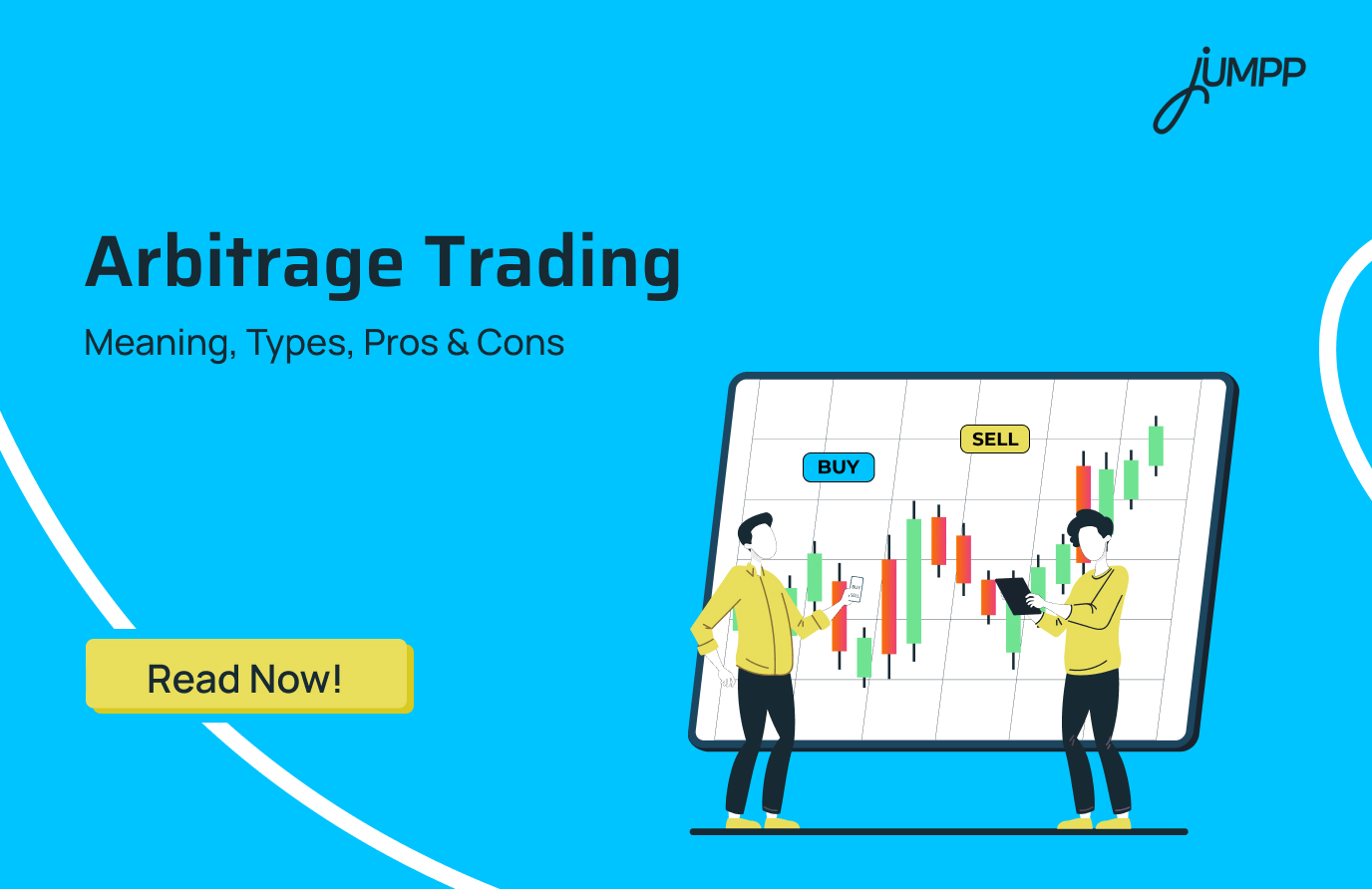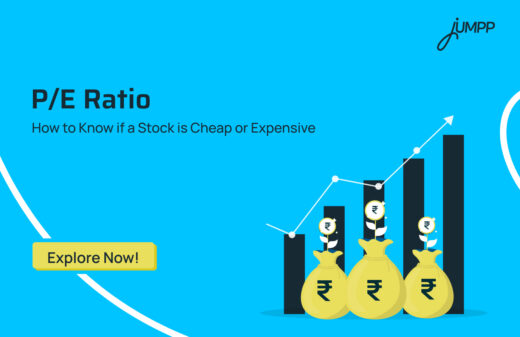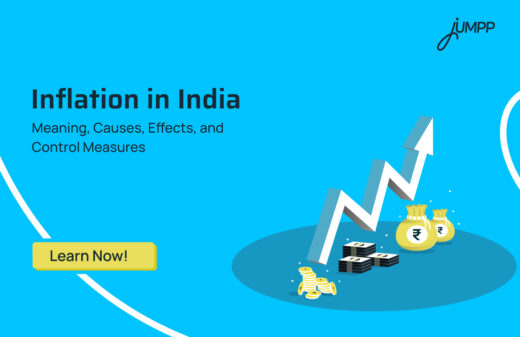Arbitrage Trading in India: What It Means and How It Actually Works

While researching, you might have noticed that the same stock sometimes trades at slightly different prices on two platforms. For example, it may be priced at ₹1,000 on the NSE but ₹1,005 on the BSE. Most of us scroll past it without even thinking about the reason behind it. But for a trader, that tiny gap can be an opportunity to make money without betting on the market’s direction. That opportunity has a name, and it is called arbitrage trading.
Arbitrage in the stock market is a trading strategy where you buy a stock where it is cheaper and sell it where it is priced higher, all within seconds, before the difference disappears.
Let us learn more about arbitrage trading, including its benefits and risks.
What is Arbitrage Trading
Arbitrage trading is a strategy that involves buying and selling the same asset in different markets at the same time to profit from small price differences.
For instance, a trader might buy a stock on the exchange where it is cheaper and sell it on another where the price is slightly higher, earning a profit from the difference with minimal risk. This strategy takes advantage of temporary market inefficiencies and can be applied across various assets such as stocks, currencies, and commodities.
Is arbitrage trading legal in India?
Yes, arbitrage trading is legal in India, as long as it follows SEBI regulations and market norms. A key restriction is that intraday cross-exchange arbitrage without taking delivery of shares is not permitted. Traders must take delivery of the shares before executing such trades. Legal arbitrage strategies in India include cash–futures arbitrage, merger arbitrage, and other inter-exchange opportunities that involve actual delivery of the underlying asset.
What is Arbitrage Trading with an Example
Let us say a stock trades at ₹1,000 in the spot or cash market. On the other hand, the futures contract for the same stock, which is priced at ₹1,020, is supposed to expire in one month.
A trader spots this difference and decides to use it.
They buy 100 shares of the stock in the cash market for ₹1,00,000 (₹1,000 x 100) and at the same time, they sell one futures contract (which represents 100 shares) for ₹1,02,000 (₹1,020 x 100).
As the expiry date comes closer, the futures and spot prices start to move towards each other. By the time the contract expires, both prices usually match. The trader then sells the shares bought in the cash market at the final price and earns the difference between ₹1,020 and ₹1,000.
Gross profit: ₹20 per share x 100 shares = ₹2,000.
After brokerage, taxes, and financing costs, the trader keeps what remains as the net profit.
How Arbitrage Trading Works in India
In the Indian market, one of the most common types of arbitrage is when traders take advantage of price gaps between the spot market and the futures market. These opportunities do not last long, and only traders who can act fast and calculate costs carefully usually benefit from them.
- It begins with the point when the trader identifies the same asset being quoted at different prices across two or more markets.
- They buy the asset in the market where it’s cheaper. Then, they simultaneously sell it in the market where it’s priced higher.
- The profit earned is the difference between the selling and buying prices, minus any transaction or brokerage fees.
Types of Arbitrage in the Stock Market
In India, arbitrage strategies are closely regulated by the Securities and Exchange Board of India (SEBI) to ensure transparency, fair play, and market stability.
Below are the major forms of arbitrage commonly recognised and practised in India:
1. Spatial Arbitrage
Spatial arbitrage involves exploiting price differences for the same security across two or more exchanges.
For instance, if a stock is trading at ₹500 on the National Stock Exchange (NSE) and ₹502 on the Bombay Stock Exchange (BSE), a trader can buy it from the NSE and sell it simultaneously on the BSE.
2. Futures Arbitrage
Futures arbitrage is among the most widely used strategies in the Indian market. It takes advantage of the difference between the spot price of a stock and its futures price.
A popular method is known as the “cash and carry” trade, where the trader buys the stock in the cash market and simultaneously sells a futures contract for the same stock at a higher price.
The reverse, called “reverse cash and carry”, occurs when the futures price is lower than the spot price.
3. Merger Arbitrage
Merger arbitrage, often referred to as deal arbitrage, involves trading the shares of companies undergoing mergers or acquisitions.
4. Risk Arbitrage
This is also known as event-driven arbitrage. Risk arbitrage means taking positions based on expected outcomes of corporate actions such as takeovers, buybacks, divestitures, or spin-offs.
5. Convertible Arbitrage
This type of arbitrage focuses on identifying mispricing between a company’s convertible securities — such as convertible bonds or preference shares — and its underlying equity.
6. Statistical Arbitrage
Statistical arbitrage is a more advanced, data-driven strategy that uses mathematical models and algorithms to identify tiny, short-term mispricings among related assets.
7. Dividend Arbitrage
Dividend arbitrage aims to benefit from dividend payouts without taking on significant market risk. Traders buy a stock just before its ex-dividend date to receive the dividend, while simultaneously taking an offsetting position — usually through derivatives — to neutralise any price fall that occurs once the stock goes ex-dividend.
8. Forex and Index Arbitrage
Forex arbitrage exploits price differences in currency pairs across different global markets or brokers.
On the other hand, index arbitrage focuses on discrepancies between a stock market index, such as the Nifty 50, and its futures contract.
What are the Benefits of Arbitrage
Arbitrage benefits both individual investors and the wider financial market.
Let us see how!
Benefits for investors and traders
- Low-risk profit opportunity:
A major advantage of arbitrage is the potential for near risk-free returns. Since investors buy and sell the same asset simultaneously, they are not speculating on market direction. The profit is effectively locked in at the time of the trade through the price differential.
- Income during volatility:
Arbitrage succeeds in volatile conditions when price gaps appear more frequently. This makes it a preferred strategy for conservative investors seeking consistent returns without taking on large market risk.
- Accessible through mutual funds:
For retail investors who lack the capital, speed, or infrastructure to trade directly, arbitrage mutual funds offer a simple and professionally managed route.
Start investing with the best mutual funds investment app that helps you invest smarter, set up SIPs in seconds, and keep a unified view of all your investments.
- Tax advantages:
In India, arbitrage mutual funds are taxed as equity funds. These offer better post-tax returns than traditional debt funds when held for more than a year.
Benefits for financial markets
- Promotes market efficiency:
When arbitrageurs buy a security in one market and sell it in another where it’s priced higher, they help prices converge. This process removes distortions and ensures fairer asset valuation across exchanges.
- Enhances price discovery:
By identifying and acting on pricing discrepancies, arbitrageurs contribute to more accurate and transparent market pricing. Their trades reflect real-time supply and demand, improving overall price discovery.
- Increases liquidity:
Arbitrage in the stock market often involves large trade volumes. This constant activity boosts market liquidity, which makes it easier for other participants to buy or sell without major price impact.
What are the Risks of Arbitrage
Arbitrage is often seen as a low-risk trading strategy, but it is not entirely free from danger. The risks generally arise from timing, execution, technology, and unpredictable market behaviour.
Execution and timing risks
- Slippage:
This occurs when the price of an asset changes between the time an order is placed and when it is executed. In fast-moving markets, even a minor delay can erase profits or cause losses.
- Execution delays:
Arbitrage opportunities last only for a few seconds. Any delay in executing one side of the trade can cause the price gap to close, making the opportunity unprofitable.
- Technological failure:
High-frequency arbitrage depends heavily on advanced software and fast internet connections. Technical glitches, platform outages, or connectivity failures can prevent simultaneous trades, leading to losses.
Market and liquidity risks
- Liquidity shortfalls:
In illiquid markets or for thinly traded assets, executing large trades quickly can be difficult. The resulting price impact can wipe out the potential profit margin.
- Market volatility:
Volatile markets create arbitrage opportunities but also heighten the risk of sudden price swings. A sharp move in either direction can turn a profitable trade into a losing one.
- Model risk (for statistical arbitrage):
Statistical arbitrage relies on mathematical models that assume historical price relationships will continue. When market conditions change and these correlations break down, the models can fail, leading to unexpected losses.
Specific risks in different types of arbitrage
- Risk arbitrage (Merger arbitrage):
Traders profit from the price difference between a target company’s stock and the proposed acquisition price. The main risk is deal failure due to regulatory rejection, funding issues, or shareholder disapproval. If the deal collapses, the target’s stock can drop sharply.
- Currency arbitrage:
This involves trading between currency pairs to exploit exchange rate differences. The primary concern is counterparty risk, where one party fails to fulfil its contractual obligation.
- Futures arbitrage:
Also known as cash-and-carry arbitrage, this takes advantage of price differences between the spot market and futures contracts. Risks include financing costs for holding the asset and potential issues with settlement or delivery.
Operational and regulatory risks
- Transaction costs:
Brokerage fees, taxes, and other costs can quickly erode small arbitrage margins. Successful arbitrage requires accurate calculation of these expenses before entering trades.
- Regulatory changes:
Government or exchange-level policy changes, such as restrictions on short selling or changes in margin requirements, can disrupt arbitrage strategies or raise compliance costs.
What is an Arbitrage Fund and How It Works
An arbitrage fund is a type of equity-oriented mutual fund scheme that aims to generate steady, lower-risk returns by exploiting temporary price differences of the same asset in different markets.
In simpler terms, fund managers buy a stock in the spot market—where the stock is traded for immediate delivery—and simultaneously sell it in the futures market, where it is traded for delivery at a future date. The small difference between those two prices, known as the “spread”, becomes the source of profit.
Key Features of Arbitrage Funds
1. Arbitrage funds are ideal for conservative investors or those looking for short-term parking options for their surplus funds.
2. For taxation purposes, arbitrage funds are treated as equity-oriented funds. This means that if held for over a year, they qualify for long-term capital gains tax benefits similar to equity mutual funds.
3. According to SEBI regulations, arbitrage funds must invest at least 65% of their total assets in equities and equity-related instruments. The remaining portion can be parked in debt or money market instruments to maintain balance and stability.
Interested in exploring more advanced investment options beyond arbitrage trading?
Learn how Specialised Investment Funds can diversify your portfolio and unlock long-term wealth potential.
Arbitrage Trading- FAQs
Arbitrage is the practice of simultaneously buying and selling the same asset in different markets to profit from a price difference.
Yes, arbitrage is legal in most developed markets. It plays an important role in promoting efficiency by helping align asset prices across exchanges and reducing market imbalances.
The “90-90-90 rule” is a popular saying in trading circles. It states that 90% of traders lose 90% of their capital within their first 90 days. The rule highlights how emotional decision-making, inadequate preparation, and weak risk management lead to early trading losses.
Profit from arbitrage comes from spotting and exploiting temporary price differences for the same asset. Traders buy in the cheaper market and sell in the costlier one at the same time.
The 3-5-7 rule is a practical risk management approach. It suggests not risking more than 3% of total capital on one trade, limiting overall exposure to 5%, and targeting a minimum 7% profit on successful trades.
The most common form is pure or spatial arbitrage, where traders buy an asset on one exchange where it is cheaper and simultaneously sell it on another exchange where the price is higher.






